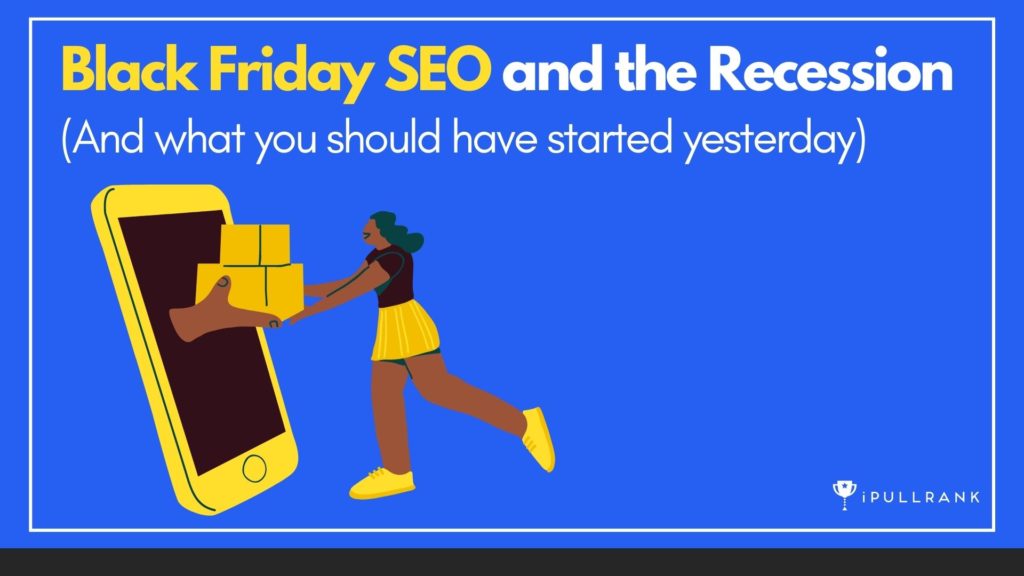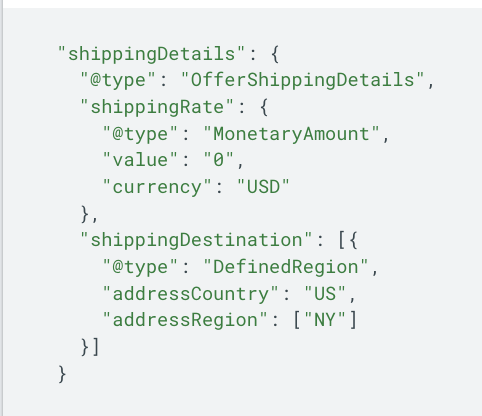Black Friday is coming and we always wait too late to do anything about it.
The last 2 years have been complicated by the pandemic. This year, the economy is very different. Q2 2022 research from Deloitte indicates that “consumer prices are rising at a steady rate of over 5% by the end of 2022, causing the Fed to raise interest rates to limit demand. In 2023, inflation continues, but a “growth recession” causes the unemployment rate to rise.”
What does this mean?
Customers are deciding to wait. According to Mention Me, friends and family are already sharing anecdotally that they’re holding back on purchases until they see what sort of deals brands have to offer.
Brands are facing the perfect storm.
How the recession will impact Black Friday
Recessions are difficult at first.
No one knows precisely when a recession will arrive, how bad it will be, how long it will last, or how severely the economy will be affected. Right now, economists aren’t even sure if we’re in a recession yet (or not). And then there are headlines like this one from Bloomberg.
Or how about this one?
But history tells us that economists have been wrong before.
How will this impact Black Friday?
As I mentioned earlier, surveys and anecdotal data state that customers are holding back on purchases so they can see what’s available. Why are customers taking this route?
- Gas prices have hit record highs around the world.
- As gas prices increase, consumer spending elsewhere decreases.
- Consumers are taking out loans to buy food, pay for gas, and housing.
- Consumers are relying on buy now, pay later apps like Klarna, Afterpay, and Affirm to pay for food, gas, and housing.
- Food shortages continue to drive prices up as supply decreases well below demand. As a result, consumers are spending more money on foodstuffs, hoarding as much food as they can.
It makes sense though, right?
Consumers are waiting to see what sort of deals brands are prepared to offer. This seems like the obvious and prudent thing to do until you realize many retailers are out of touch.
How’s that possible?
Mark Choueke, in his post for Mention Me, outlined how out of touch VivaTech attendees were.
“I heard nobody mention the recession.
Plenty of panels and interviews featuring some of tech’s true giants focused on important issues such as diversity, data ownership, security, and skills.
Elsewhere there was much chatter about the Metaverse, NFTs, and the blockchain.
Demos were dominated by drones, driverless cars, and aspirational (unnecessary) use cases for VR and AR.
But little was said about the squeeze our customers are about to face or the increased support or value we should be creating for them.”
Yikes.
The good news?
You’re not out of touch. In fact, there’s a predictable series of steps your organization can take to prepare for Black Friday, Cyber Monday, and beyond – even as recession storm clouds loom over us.
Why you should have started your Black Friday planning months ago
Don’t worry, it’s not too late.
But it’s definitely something you’ll want to get an early start on in the future. It’s not enough to start your Black Friday planning on time. Now, you have to be early.
But why?
According to a 2021 holiday survey from RetailMeNot, 83% of Shoppers started their holiday shopping earlier in 2021; Here’s what’s so significant about this. This trend is expected to continue permanently.

According to their survey:
- 19% start shopping in August or earlier
- 18% begin in September
- 22% begin in October
- 24% start in November (pre-Thanksgiving)
- 17% start on Black Friday or later
This sounds inconsistent.
A few paragraphs ago, I mentioned that shoppers were holding back on purchases until they saw what sort of deals brands were offering. Now I’m saying you need to get an early start on your Black Friday planning?
There are no inconsistencies here.
Parents will still move heaven and earth to purchase presents for their children. Spouses are still going to buy gifts for each other. Families are going to do their holiday shopping. This just means they’ll be more selective about the products and services they buy.
They want a great deal.
Present shoppers with a deal that’s too good to pass up in August, and they’re far more likely to pull the trigger. The volume may be different, but purchases will be made.
Black Friday pre-planning is here to stay.
What can you do about all of this, then? Let’s take a look at twelve SEO tactics eCommerce organizations can use to improve their Black Friday performance.
Taking advantage of Google’s Product Reviews Update
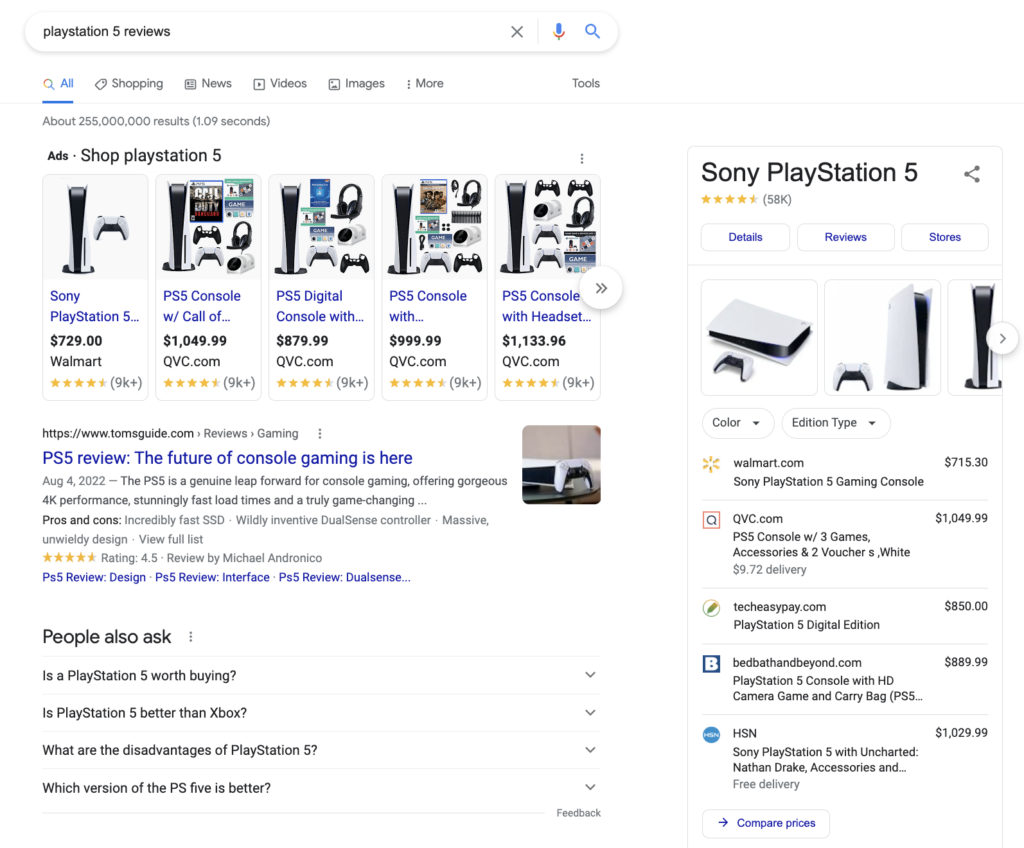
Google completed its third product reviews update.
They discussed these changes on their blog:
“We know people appreciate reviews that share in-depth research, rather than simply summarize a bunch of products. Today’s update builds on this work to make sure that product reviews in Search meet certain criteria, such as:
- Include helpful in-depth details, like the benefits or drawbacks of a certain item, specifics on how a product performs, or how the product differs from previous versions
- Come from people who have actually used the products, and show what the product is physically like or how it’s used
- Include unique information beyond what the manufacturer provides — like visuals, audio, or links to other content detailing the reviewer’s experience
- Cover comparable products, or explain what sets a product apart from its competitors”
How do you use this?
Create rich, detailed content that provides shoppers with a detailed experience. This means you’ll need to recruit customers to help you create 10x product review content.
How on earth are you supposed to do that?
Check out this example from Pampers with a great, authentic customer review (sometimes lower production value actually improves the quality):
First, you’ll want to ensure that your product content is competitive across five dimensions. These dimensions are as follows:
- Design: Your eCommerce site is professionally designed, visually uncluttered, organized well, and aesthetically pleasing. Your site architecture is clear, and you provide shoppers with the direction and cues they need to find what they want. Design also refers to the format of your content; the more formats you use, the better. Video, images, text, slides, specs, diagrams, and walkthroughs are all great ways to differentiate your product review content.
- Depth: You create content that goes deeper, discussing the caveats that come with a particular product. You clearly distill the requirements and prerequisites needed to maximize product value. You offer shoppers a frank and detailed discussion product, outlining how it addresses their desires, goals, expectations, and awareness levels. You provide an overt and covert level discussion of the product and your shopper’s needs (i.e., this product is for photography professionals, amateurs beware).
- Drama: You lean on customers to get their story. Negative reviews aren’t as much of a concern if you’re selling third-party products. You’ll still want to reach out to your customers for their feedback. A precisely planned review request should include one to ten questions asking customers about their experience with a particular product (and your business). This provides customers with the clarity they need to write an in-depth product review.
- Data: The manufacturer provides important specifications on their products. Providing shoppers with a companion review could be as simple as identifying product failure points, truth-in-selling information, or specific information that’s not public knowledge. How do you know whether the product data is worthwhile or not? You focus on objective data that’s valuable to customers. Important research, statistics, factoids, metrics, or original data are all excellent, so long as it’s valuable to shoppers.
- Degree: In this scenario, ‘degree’ refers to a large amount of product review content that’s churned out consistently. This sounds intimidating, but it’s actually quite simple. Make review requests a regular part of your eCommerce onboarding, follow-up, and marketing processes.
What’s the easiest way to jump-start this process?
You send out review requests to your customer database, requesting feedback on a variety of products you plan to promote during the Black Friday/Cyber Monday holiday.
Build content around your customer’s feedback and work from there.
Taking charge of Technical SEO
Technical SEO is a must-have.
It’s crucial that you take the time to verify that you have your SEO ducks in a row. Driving traffic to a site loaded with navigation and architecture issues is an easy way to leak revenue.
Here are two areas you can focus on.
- Structured data
- Internal linking
1. Structured data
Google defines structured data as “a standardized format for providing information about a page and classifying the page content; for example, on a recipe page, what are the ingredients, the cooking time and temperature, the calories, and so on.”
Structured data is on-page markup.
Google uses this structured data to create rich snippets. They are visually enhanced search results that provide searchers with in-depth information on a searcher’s query.
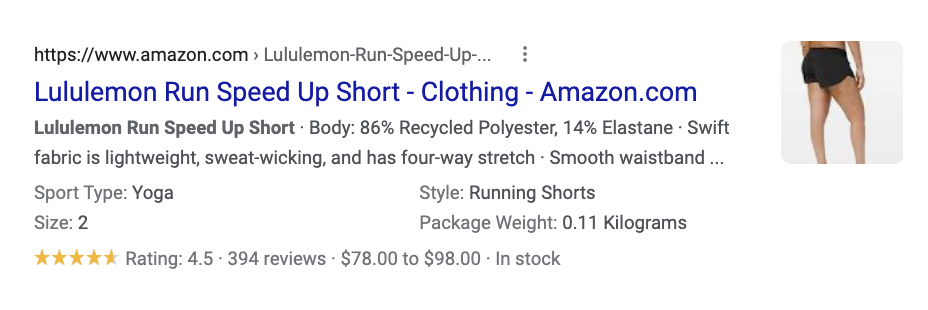
If you practice good hygiene and your structured data is formatted properly, you’ll avoid:
- Using more than one language to manage your structured data (e.g., JSON-LD + RDF)
- Using both HTTP and HTTPS
- Using incorrect or unsupported markup for your structured data
- Making your markup visible to Google but invisible to shoppers/users
You’ll want to follow the guidelines laid out by Google and their Schema Markup Validator to verify that you’re on the right track with your structured data. Structured data that’s properly formatted gives Google a deeper understanding of the content on your pages. It’s easier for them to ascertain content quality and display your pages appropriately.
What does this mean for shoppers?
You’re providing Google with the structured data shoppers need. Here’s the structured data that’s relevant to eCommerce.
- LocalBusiness: Includes NAP (name, address, phone), citations, reviews, coordinates, price range, hours of operation, etc.
- Product: Includes data like the SKU, type, color, size, price, and availability
- Review: This includes a variety of subtypes, including – books, courses, events, how-to, local business, movies, products, recipes, and software app
- HowTo: Bulleted or numbered lists with relevant, step-by-step information
- FAQPage: A list of questions and answers pertaining to a particular topic
- BreadcrumbList: This denotes a page’s position in your site hierarchy, providing shoppers (and Google) with the orientation they need to navigate your site properly (e.g., books > science fiction > dune)
- WebSite: This is a sitelinks search box, enabling people to search your site or app via Google’s search results page’s
- VideoObject: Provides Google with the video description, thumbnail URL, upload date, and duration.
Offering in-depth, rich, multi-format, long-form, E-A-T content is a simple way to give Google (and shoppers) the data they need.
2. Internal linking
If you have a large eCommerce site, internal linking is an obvious must-have that amplifies your marketing efforts via an important tool.
I’m talking about link equity distribution.
Using your internal links, you can direct the value and authority that flows through your site, maximizing your site’s ranking power in Google Search. Your internal linking is dependent on several factors which will need your attention.
- Authority
- Crawlability
- Do-follow vs. no-follow
- HTTP status
- Link location
- Relevance
When the above items are optimized and managed well, your ranking power is distributed more effectively across your domain. Good internal linking tells Google which pages on your eCommerce site are more important. Internal linking gives Google the clarity they need to rank your website properly (though it’s not a ranking factor).
Internal linking enables shoppers to navigate your website, improving the user experience, engagement, and time on site. They can search for, find, and purchase the products they want in a minimal amount of clicks.
What does this mean?
It’s absolutely essential that you optimize internal linking across product categories and related products (e.g., upselling, cross-selling, down-selling, etc.).
Optimizing eCommerce content
- Building out product pages
- Optimizing your cart flow
1. Building out product pages
What do your product pages need to convert?
Is there a list of ingredients you’ll need to have in order to maximize the performance of your product pages? There is; even better, there’s a standard list of content you can use to dramatically improve conversions across each of your product pages.
Here’s the thing, you already have (part of) the answer.

- Design: Your product pages should be well designed. Product images and videos should have great production values, high resolution, and be clear and descriptive. All of your content should be aesthetically pleasing to shoppers. Your content should have sufficient white space, so shoppers aren’t slammed with a wall of text. Your content should be clear, concise, and easy to read.
Which Pixel is Right For You? Pixel 6 vs Pixel 6a
- Depth: Shallow content isn’t enough. Shoppers expect your content to answer their educational (i.e., Is this telescope DSLR compatible?) and informational (i.e., What isn’t covered by your extended warranty?) questions.” This means you’ll need to create original content for your product pages rather than relying on the boilerplate content that’s provided by manufacturers.
- Drama: It all comes down to reviews. If your products make an impact on customers, it’s important that they share their stories. Customers share details that make their stories compelling and persuasive. Their reviews outline their problem, showing how your products solved their problem. Reviews document fears, expectations, objections, risks, and outcomes. It’s an essential part of a strong product page.
- Data: This could be technical data, long-term performance data, specifications, questions and answers, and even necessary add-ons (i.e., customers who bought this also bought…). Your customer personas, cohort analysis, keyword research, market research, etc., will give you the clarity you need to identify the data shoppers want.
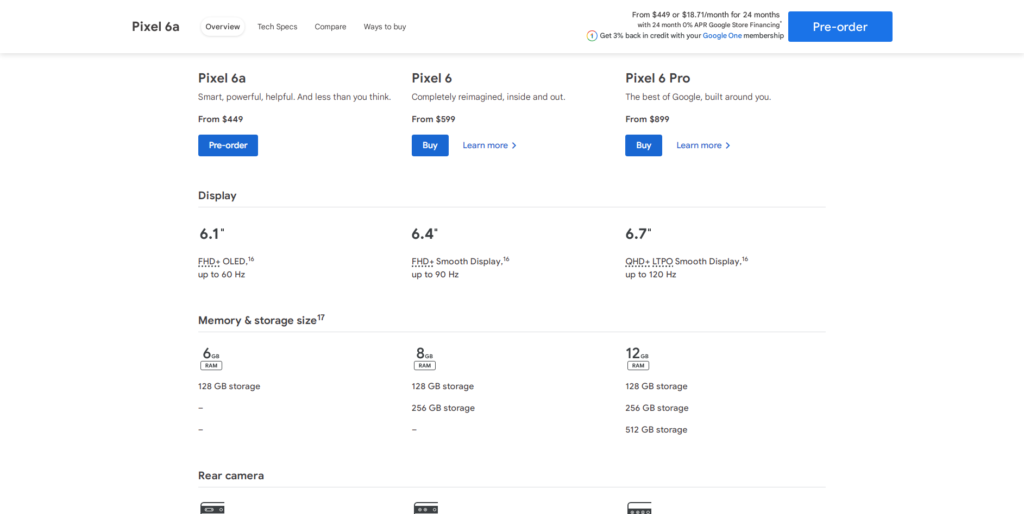
- Degree: This is about consistency; if you’re going to provide rich information on specific products, you’ll want to do it for all of your products. Add content that discusses everything shoppers need to know – problems, expectations, objections, social proof (via reviews), fears, risks, etc. Provide them with clear descriptions that are unique to your website rather than regurgitated content from manufacturers.
2. Optimizing your cart flow
Does your cart create unnecessary friction?
You’ve mapped the buyer’s journey; you know who your customers are and what they need. Is your shopping cart flow optimized around your buyer segments? This is an issue because of your audience variety.
- Bots can be benevolent or malevolent; you may be receiving visits from Googlebot, crawling your site to update their index, or spam bots like Cutwail that eat up your server resources, slow down, or compromise your site.
- Predators are criminals in search of vulnerabilities and weaknesses they can exploit. These predators steal your customer’s data, access financial data, or gain unauthorized access to your site. They’re always there, waiting for the chance to spring their trap on you and your shoppers.
- Competitors are looking for openings too; ideas they can copy (steal), improve upon, or denigrate. These are dedicated teams who are on the lookout for a competitive advantage or opening they can use against your organization.
- Unfits take value away from your organization. They cover a broad category of visitors – salespeople searching for a way to get to company decision-makers, PR reps, and journalists studying your business, or investors and influencers looking for information they can use to enrich themselves.
- Scammers are undesirable people looking for a way to abuse, manipulate or steal from you. These pretenders act like customers, but they’re not. They could be patent trolls, predatory customers, or information vampires. They’re looking for a way to a.) maximize the value they extract and b.) minimize the value they give in return.
- Customers who are able and willing to buy your products. These shoppers are real people who are in the market for your products and are considering a purchase. In this segment, there are a variety of segments and cohorts (e.g., customers who spend more than $$$ per quarter, repeat buyers, loyalists, etc.).
The mistake brands make? They treat these groups as a single, uniform group.
When you’re optimizing your cart flows, you’ll need to adjust the levers in such a way that you decrease friction for your target segments and cohorts and increase friction for your undesirables.
How do you measure success?
You optimize your shopping cart flow against the following criteria. Your changes must:
- Improve performance across these metrics and KPIs
- Address customer desires, goals, and pain points
- Increase traffic, virality, visibility, and shares
You’re looking for a consistent lift across each of these methodologies.
- Technical SEO
- Conversion rate optimization
- Usability testing
- Site architecture improvements
- Page Speed optimization
- Addressing performance issues
- Upsell mapping
- Content engineering
- Email marketing and optimization
Each of these methodologies should be used to optimize your shopping cart flow, making it easy for shoppers to buy your products. As you create offers for Black Friday, take the time to look at your cart flow through the lens of the methodologies listed above.
Verify that your cart provides shoppers with:
- A seamless experience that takes them from search results, to product page, to shopping cart, to payment confirmation
- A frictionless experience: Don’t create unnecessary friction by forcing customers to register, sign-up, or opt in unless it’s absolutely essential
- Pricing clarity: Make sure shoppers are fully aware of all fees (e.g., taxes, shipping, refund, and exchange costs)
- The option to save their cart for later. Don’t demand that customers purchase the items in their cart by X time, or they’ll lose the contents of their cart.
- Helpful recommendations in the form of upsells, down-sells, and cross-sells.
- The ability to take a quick peek at the items in their cart while they’re shopping. This answers implicit questions (i.e., do I have enough items in my cart to qualify for free shipping?)
- A clear sense of urgency (i.e., Order fast, only 4 left.)
A strong value proposition is exclusive, desirable, believable, and understandable. If your cart flow conveys these details, you’ll find it’s easier to earn shopper confidence over this holiday season.
Then there’s the URL.
Are your URLs durable and evergreen? They absolutely should be; you’ll want to avoid using the following items in your URL slug:
- Adjectives
- Author names
- Dates
- Information about the post itself
- Opinions
Your URLs sort content by criteria like:
- Product
- Category
- Type
- Actions (i.e., /buy/ipads/)
- Keywords
You can always change on-page factors (e.g., page title, meta description, images, or body text) once you hit publish, but you can only choose your original URL once.
Pop-ups and modal windows
Pop-ups are irritating.
But they’re also incredibly effective. In a recent study from Sumo, they found that the best performing pop-ups had a conversion rate of 9.28%; some pop-ups saw conversion rates were as high as 50.2%. This study analyzed 1,754,957,675 pop-ups across millions of websites.
Pop-ups work.
But what makes these pop-ups work? Here are the insights from their study.
- Pop-ups with more context have higher conversion rates
- The highest-converting pop-ups don’t appear immediately
- Being unclear with your headline and offer will sink your conversion rates
- Adding personality to your pop-ups creates interest
- The best pop-ups offer something of value
- Pop-ups shouldn’t appear again and again after a visitor declines
- Calls-to-action should match the offer
- Exit pop-ups need an irresistible, highly valuable offer
What about Black Friday?
Create irresistible offers that you can promote via your pop-ups for your Black Friday and Cyber Monday shoppers. Use these offers to lure shoppers in, then provide them with the additional offers they need to make the holidays worthwhile.
What’s the role of Google Lens on Black Friday?
What is Google Lens?
Google Lens is visual search.
Google Lens is an image recognition app that allows you to perform a Google search using real-world objects from your phone’s camera. Google Lens enables you to instantly search for what you see without having to describe it perfectly first. Google Lens analyzes shapes, colors, textures, and shading, comparing each image to 15 billion other images.
What’s the role of Google Lens on Black Friday?
Google explains in their post, “60% of shoppers say they often or sometimes get inspired or prompted to buy something even when they aren’t actively shopping. That can come from spotting great street style: 39% of shoppers say they often or sometimes look for a specific outfit online after they see someone wearing it. Or it can come from browsing online: 48% of shoppers have taken a screenshot of a piece of clothing, accessory, or home decor item they liked (and 70% of them say they’ve searched for or bought it afterward). Google Lens can help you shop for looks as soon as you spot them. Just snap a photo or screenshot and you’ll find exact or similar results to shop from.”
Google wants to help searchers find what they want the moment they need it.

Belinda Zeng, Product Manager, Search had this to say: “With multisearch on Lens, you can better uncover the products you’re looking for even when you don’t have all the words to describe them. For example, you might be on the lookout for a scarf in the same pattern as one of your handbags. Just snap a photo of the patterned handbag on Lens and add the query “scarf” to complete your look. Or take a photo of your favorite heels and add the query “flats” to find a more comfortable version.”
How can you use Lens to prepare for Black Friday?
- Step #1: Add your products to Google Product Listings. Doing this means your products will appear in Google Images, Google Search, Google Shopping, and Google Lens searches. Create a free or paid campaign on Google Shopping. This will also help you to add your products to Google.
- Step #2: Verify that you’re following Google’s policies; set your website up with (a.) Create a Merchant Center Account then, (b.) Create a data feed so you can share your product data with Google. (c.) Add structured data markup to your website.
If you’ve done this, you’re ready for Google Lens.
Google Multisearch is available via the Google app, enabling shoppers to search for your products using your camera, voice, text, and images – all at the same time.
The time for Black Friday planning is yesterday
But it’s not too late.
It’s not enough to start your Black Friday planning on time. These days, you have to be early. The threat of a recession means shoppers are holding back on purchases. They want to see what sort of deals You’re willing to offer.
Don’t misunderstand me here.
Parents, spouses, and families will still purchase presents for their loved ones. The holiday shopping traditions we have will continue. Shoppers will be more selective about the brands they do business with, but the Black Friday tradition remains the same.
Shoppers want a great deal.
Present shoppers with a deal that’s too good to pass up, and you’ll find they’re far more likely to pull the trigger on their purchase. Recession or not, purchases will be made, might as well be from you.

